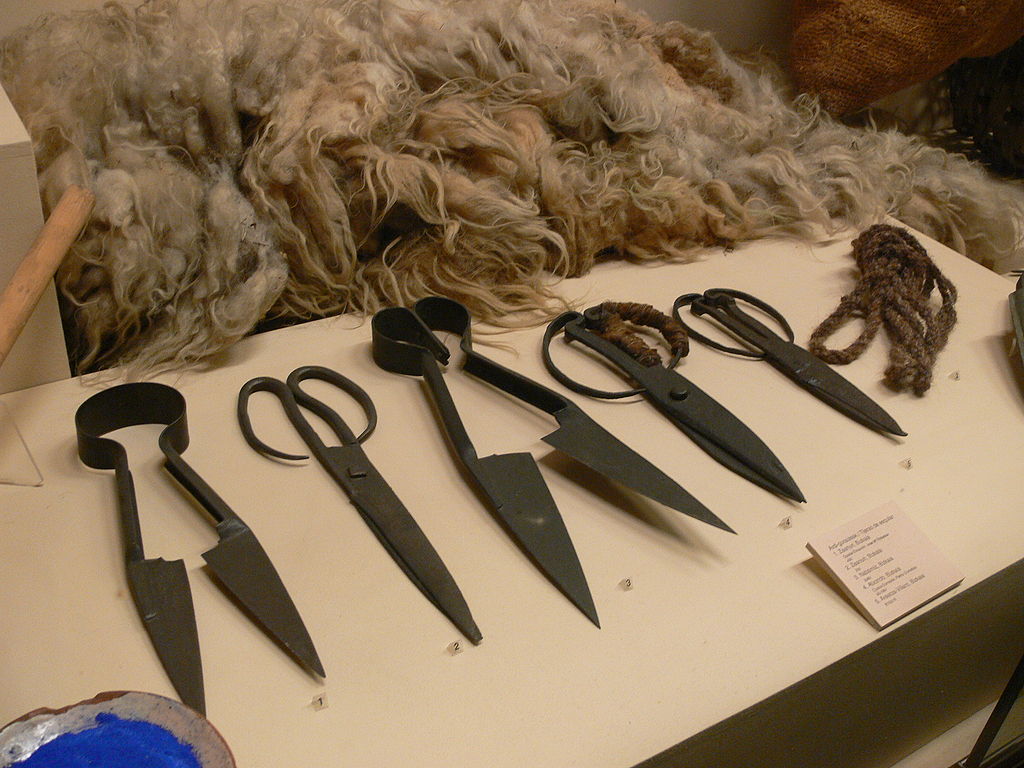 |
| Spinning Wool at Black Creek Pioneer Village in Toronto, Ontario |
One of the
most iconic images of the early settler period of Ontario is that of a pioneer woman
sitting in her tiny log cabin spinning wool.
The process of turning fleece into
wool is simple, yet takes a lot of practice to truly perfect. The first step is to shear the sheep; normally
done once, sometimes twice, a year in the early spring. This allows the sheep to be comfortable
during the summer weather, while growing back their wool to maintain warmth through
cooler seasons.
The next
step is to clean the fleece. To make the
cleaning process more efficient, some would pick it apart first, removing any
overly matted bits or large clumps of dirt or excrement. How do you clean fleece? You can literally place it in a tub of cold
water with minimal soap. Hot water can
threaten the fibres and too much soap can remove some of the natural oils (lanolin)
that even to this day we can separate and harness for other purposes (hand
lotions, soaps). Having some of the
natural oils on the wool also makes it easier to spin. Some settlers may change the water once or
twice to remove as much of the dirt as possible.
 |
| Traditional Sheep Shears |
Spinning wool is essentially the
twisting of the fibres at a rapid pace to connect them and link them into one
whole string. The thickness and
consistency of that string is all dependent on the spinner. An early settler spinning wool to make socks
for their children may not care so much for the consistently and quality of the
string as someone spinning for a business.
It is completely possible to spin several strings together to create a
thicker yarn.
This three-part series "Wool in the 19th Century" was written by Caroline Bendiner, Culture Coordinator for the Township of King. She has a BA in history from Queen's University and a post graduate certificate in Cultural Site Management from Centennial College. Caroline has a strong passion for history and sharing history with the public.
No comments:
Post a Comment